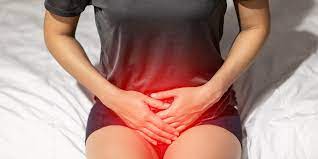A UTI occurs when bacteria, most commonly Escherichia coli (E. coli), enter the urinary tract and multiply. This can lead to infections in various parts of the urinary system, including the bladder (cystitis), kidneys (pyelonephritis), and urethra (urethritis). Understanding the available treatment options is crucial for managing symptoms and preventing recurrent infections.
Symptoms and Diagnosis of UTIs
Before diving into treatment options, it's essential to recognize the symptoms of a UTI. Common signs include a strong, persistent urge to urinate, a burning sensation when urinating, passing frequent, small amounts of urine, and cloudy or strong-smelling urine. In more severe cases, especially when the infection spreads to the kidneys, symptoms may include back pain, fever, chills, and nausea.

Diagnosing a UTI typically involves a urinalysis, where a urine sample is tested for the presence of bacteria, white blood cells, or other indicators of infection. In recurrent or complicated cases, a urine culture may be conducted to identify the specific bacteria causing the infection, guiding more targeted treatment.
Treatment Options for UTIs
- AntibioticsAntibiotics are the most common and effective treatment for UTIs. The type of antibiotic prescribed depends on the bacteria involved and the severity of the infection. Commonly prescribed antibiotics for UTIs include trimethoprim/sulfamethoxazole (Bactrim, Septra), nitrofurantoin (Macrobid, Macrodantin), and fosfomycin (Monurol).The course of antibiotics can vary, typically lasting between three to seven days. It's crucial to complete the entire course, even if symptoms improve, to ensure the infection is fully eradicated. In cases of recurrent UTIs, a healthcare provider may prescribe a longer course of antibiotics or recommend low-dose antibiotics as a preventive measure.
- Pain ManagementAlongside antibiotics, pain relief can be an essential part of UTI treatment. Over-the-counter pain relievers such as ibuprofen or acetaminophen can help alleviate discomfort. Additionally, a urinary analgesic like phenazopyridine (Azo, Uristat) may be prescribed to soothe the urinary tract lining, reducing burning and urgency symptoms.
- HydrationStaying well-hydrated is a simple yet effective strategy to help flush bacteria from the urinary system. Drinking plenty of water encourages frequent urination, which can aid in clearing the infection more quickly. Cranberry juice is often touted as a home remedy for UTIs, though evidence on its effectiveness is mixed. Some studies suggest that cranberry products may prevent bacteria from adhering to the urinary tract, but they should not replace antibiotics as a treatment.
- ProbioticsProbiotics, particularly those containing Lactobacillus species, have gained attention for their potential role in preventing UTIs, especially in individuals prone to recurrent infections. These beneficial bacteria can help maintain a healthy balance in the urinary and digestive systems, potentially reducing the risk of infections. Probiotics can be taken as supplements or through dietary sources such as yogurt and fermented foods.
- Preventive MeasuresFor those prone to recurrent UTIs, taking preventive measures is crucial. These may include lifestyle changes such as urinating after sexual activity, wiping from front to back to avoid bacterial contamination, and avoiding irritants like harsh soaps or douches. In some cases, a healthcare provider may recommend prophylactic antibiotics, which are taken either after sexual activity or continuously at a low dose to prevent infections.
- Alternative and Complementary TherapiesWhile antibiotics remain the cornerstone of UTI treatment, some individuals explore alternative or complementary therapies. These might include herbal supplements, acupuncture, or biofeedback therapy. However, it's important to approach these options with caution and consult a healthcare provider before incorporating them into a treatment plan.
When to Seek Medical Attention
It's important to seek medical attention if UTI symptoms persist after a few days of treatment or if there are signs of a kidney infection, such as back pain, fever, or chills. Kidney infections can be serious and require prompt medical care.
In addition, individuals with underlying health conditions, such as diabetes or compromised immune systems, should be particularly vigilant, as UTIs can lead to complications more quickly in these populations.
Conclusion
UTIs are a common but manageable condition with a range of effective treatments available. Prompt diagnosis and appropriate antibiotic use are key to resolving infections and preventing complications. Additionally, adopting preventive measures and exploring complementary therapies can help reduce the risk of recurrent infections. Always consult a healthcare provider for a treatment plan tailored to your specific needs, and never hesitate to seek medical attention if symptoms worsen or do not improve with initial treatment.
